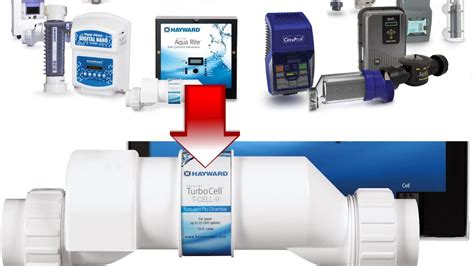Hayward Salt Cell Age: Important Considerations
Maintaining a sparkling clean and properly sanitized pool is crucial for both enjoyment and health. A Hayward salt cell plays a vital role in this process, generating chlorine through electrolysis. However, like all pool equipment, Hayward salt cells have a limited lifespan. Understanding the age of your salt cell and its associated implications is crucial for optimal pool maintenance and avoiding costly repairs or replacements down the line. This article delves into the important considerations surrounding the age of your Hayward salt cell.
How Long Do Hayward Salt Cells Last?
The lifespan of a Hayward salt cell is not fixed; it varies depending on several factors. While manufacturers typically suggest a lifespan of 3-5 years, this can significantly differ based on usage, water chemistry, and maintenance. Factors like frequent power outages, harsh chemicals, and high mineral content in your pool water can all contribute to a shorter lifespan.
Signs Your Hayward Salt Cell Needs Replacing
Several indicators suggest your Hayward salt cell may be nearing the end of its life. These include:
- Reduced Chlorine Production: Noticeably lower chlorine levels despite consistent salt cell operation indicates reduced efficiency. This is often a primary sign of aging.
- Increased Salt Cell Cleaning Frequency: If you find yourself cleaning your salt cell much more often than usual, it could be a sign of internal buildup and reduced effectiveness.
- Error Codes/Alarm Signals: Your pool's control system may display error codes specific to the salt cell, signaling malfunction.
- Visible Damage: Inspect the cell for physical damage like cracks, corrosion, or scaling. Any visible signs of deterioration warrant professional assessment.
- High Cell Voltage: Consistently high voltage readings during operation can also indicate a failing salt cell.
How to Determine the Age of Your Hayward Salt Cell
Determining the exact age of your Hayward salt cell might require some detective work. Check for:
- Purchase Records: Review your pool equipment purchase records or receipts. This is the most reliable method.
- Serial Number: The salt cell should have a serial number which might provide clues about its manufacturing date. Contact Hayward customer service if needed for assistance in deciphering this information.
- Installation Date: If you know when the pool equipment was initially installed, you can estimate the salt cell's age.
What Happens When a Hayward Salt Cell Fails?
A failing Hayward salt cell can result in several issues:
- Insufficient Chlorine Generation: Leading to algae growth and bacterial contamination, compromising water quality and swimmer safety.
- Increased Chemical Costs: You may need to rely more on alternative sanitizing methods, increasing your overall chemical expenses.
- Equipment Damage: A malfunctioning salt cell can potentially damage other components of your pool's filtration system.
- Pool Closure: In severe cases, a completely failed salt cell necessitates immediate action to maintain a safe and swimmable pool.
How to Extend the Life of Your Hayward Salt Cell
Proactive measures can significantly prolong the life of your Hayward salt cell:
- Regular Cleaning: Clean your salt cell as recommended by the manufacturer. This involves removing any mineral buildup or scale deposits.
- Proper Water Chemistry: Maintaining balanced water chemistry is crucial. Regularly test and adjust pH, alkalinity, and calcium hardness levels to prevent scaling and corrosion.
- Proper Salt Level: Ensure the salt level in your pool is within the manufacturer's recommended range. Too high or too low salt levels can damage the salt cell.
- Regular Inspection: Visually inspect your salt cell periodically for any signs of damage or deterioration.
Should I Replace or Repair My Hayward Salt Cell?
Whether to repair or replace your Hayward salt cell depends on several factors:
- Age and Condition: Older cells with significant damage are usually better replaced. Minor issues in newer cells might be repairable.
- Cost Comparison: Obtain quotes for both repair and replacement. Replacement might be more cost-effective in the long run, especially for older cells.
- Warranty Status: Check if your salt cell is still under warranty.
Finding Replacement Hayward Salt Cells
When the time comes to replace your salt cell, it is important to source a genuine Hayward replacement part to ensure proper compatibility and performance. Contact your pool professional or check Hayward's official website (though you shouldn't include a direct download link here) for sourcing information.
By carefully considering these factors and proactively maintaining your Hayward salt cell, you can extend its lifespan and ensure your pool remains a clean and enjoyable oasis for years to come. Remember that regular monitoring and professional maintenance are key to preventing costly repairs and maximizing the efficiency of your pool equipment.

